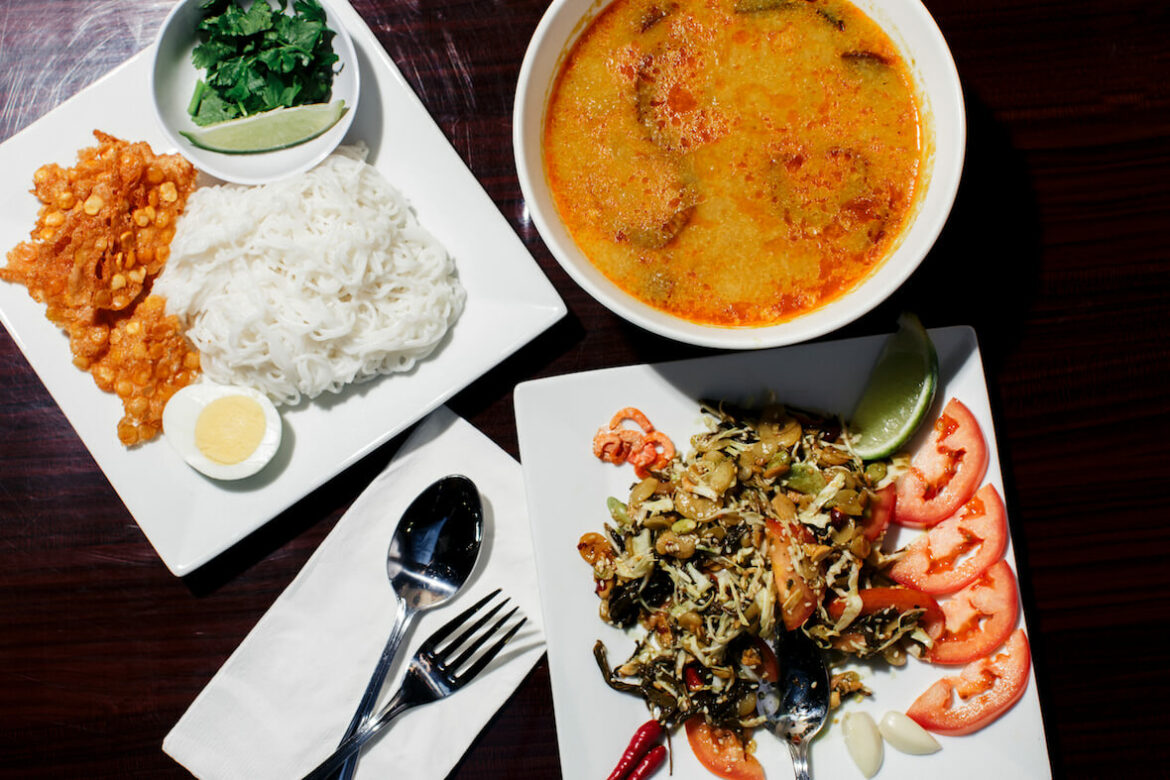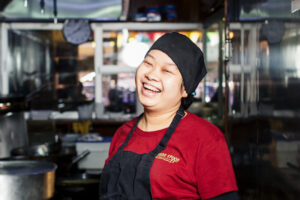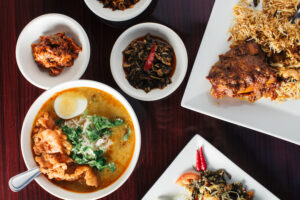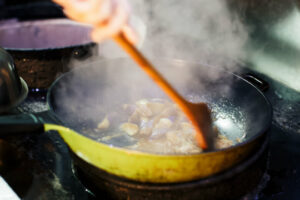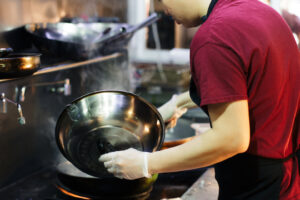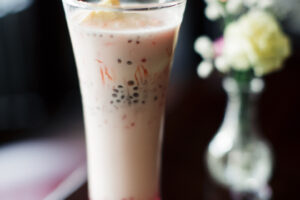
A thriving community of Burmese expats lives in New York City, yet aside from home cooking, it’s nearly impossible to get legitimate Burmese food here. In November, that finally changed with the grand opening of Rangoon Spoon, a Bensonhurst restaurant owned by 28-year-old Burmese ex-pat and self-taught chef extraordinaire Amy Tun. Unlike other so-called Burmese restaurants that cater to a Western palate (and typically go out of business), Rangoon Spoon appears to have passed the taste test: Both hungry expats and enlightened non-Burmese alike have been coming back, over and over again, for more.
“The people in our community definitely know about it, and its popularity is growing,” says Ye Lin, a Rangoon Spoon regular and self-described food snob. “That’s a good sign, because if you don’t see any Burmese in a Burmese restaurant, it means the food is not authentic.”
Burmese pride themselves on three main flavors—sour, salty, spicy—which Tun perfectly executes in her refreshing cold noodle salad, gravy-thick coconut noodles and homey yellow pea and shallot fried rice. The dishes are also homages to her roots. She grew up in Yangon, not far from Inya lake, where Nobel Peace Prize winner Aung San Suu Kyi spent years under house arrest. Following an aunt’s lead, Tun and her family moved to Brooklyn in 2005.
“We came here for the same reason as everyone else—to chase the American dream,” she says. “There’s freedom and opportunity, compared to Yangon.”
But like many newly arrived Burmese to the city, Tun was dismayed to find that the Big Apple lacked big flavor. She especially missed mohinga, the lusciously rich catfish-based rice noodle soup often considered Myanmar’s national dish. “We were craving it,” Tun says, “but there’s no place in the whole of New York City to get a bowl of mohinga!”

The only option, she and her family realized, was to make it themselves.
Luckily, Tun had them covered. A lover of all things food and cooking, she started shadowing her mother in the kitchen virtually from the time she could walk, and later volunteered at a Buddhist temple where she learned to cook ethnic Shan food (a type of delectable homemade Shan tofu, renowned for its persnickety difficulty to make, is now one of her most popular menu items). The more she cooked, however, the stronger her desire became to share her food beyond her family circle.
“She’s been lobbying us siblings for two or three years to open a restaurant—that’s all she talked about!” says Winnie Catungal, Tun’s older sister. “We finally said, ‘OK, if we wanna do it, we have to do it already.’”

While Rangoon Spoon is listed in Tun’s name, in practice, it’s a family business: Her brother, mother, husband and Catungal all regularly help out with cooking, serving and tasting. Her eldest sister, who still lives in Yangon, supplies the restaurant with shipments of certain hard-to-get ingredients, like fermented tea leaves and salad accessories—things, Tun says, “you can’t just go to the bodega to get.”
The menu itself is a testament to her favorite things to eat, but it’s also representative of the versatility of Burmese food itself. Indigenous dishes are first and foremost: There’s mohinga, of course, plus down-to-earth staples like fish cake salad, bamboo shoots with refried peas and balachaung—a sort of ultimate Burmese condiment, a mix of fried chilis, shrimp, shallots, garlic and ginger.
Other dishes nod to neighboring China and India’s influence. In Yangon, stir-fries, samosas and biriyanis are served at countless street stalls—usually with a distinctly Burmese twist. For Tun’s riff on curry, for example, she replaces mutton with melt-in-your-mouth beef shank, marinated for a minimum of six hours in yogurt and spiced with a softer take on Indian masala, which she makes herself.

Diners’ enthusiastic reception to Rangoon Spoon testifies to the city’s hunger for Burmese—and to Tun’s exceptional execution. On any given night, the crowd is split about evenly between Burmese patrons—many of whom travel all the way from Queens, and are already asking when Tun will open a second location—and a mix of American, Russian, Chinese, Jewish and Filipino guests, representative of the neighborhood.
On a recent January visit, Tun—nearly eight months pregnant—was preparing for a party of 17—a mix of young Burmese and their various Brooklynite friends. Ye Lin, seated in his usual corner with his girlfriend, took a break from a plate of aromatic chicken biriyani to greet a Burmese friend-of-a-friend who had braved the cold to pick up some takeout. A young Western couple sat near the window, sharing Tun’s impeccable tea leaf salad and sipping steaming cups of Burmese tea. Traditional music played softly in the background (with a Burmese cover of the Red Hot Chili Pepper’s “Otherside” thrown in for good measure), and fresh carnations decorated the tables.
Tun has succeeded, in other words, in creating the welcoming yet authentic space she always envisioned: a restaurant, she says, “where everyone can sit down and enjoy Burmese culture and food.”
This story originally ran on February 6, 2018.


